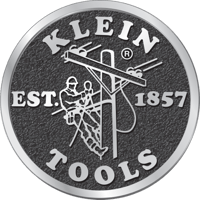LINCOLNSHIRE, Ill., Feb. 7, 2022 /PRNewswire/ — As part of its ongoing commitment to attracting,...
Training the Next Generation: How Siemens and Trade Hounds Are Using Tech to Save the Trades

A Workforce on the Brink
A new wave of emerging technologies is here to train faster, retain longer, and save the trades. But time is ticking. Every hour, America’s construction industry falls further into a devastating worker shortage. This directly leads to delayed projects, reduced productivity and higher costs for all Americans.
The Associated Builders and Contractors estimates the construction industry will need to bring in close to a half million new workers to meet demand in 2026. Electricians remain among the hardest jobs to fill, according to the Associated General Contractors of America. Baby Boomers and Gen X electricians are retiring faster than the industry is replacing them. While college for all rhetoric is fading amidst increased tuition, we can’t afford to wait for young people to discover the trades on their own.
Beyond Recruitment Campaigns
Contractors need more than recruitment campaigns. They need better training, safer pathways, and technologies that appeal to digital-native generations. That’s where Siemens and Trade Hounds come in. One of the nation’s largest studies on artificial intelligence, immersive training and extended reality in the trades is underway, offering important insights into how technology can help recruit and rebuild the workforce.
Just months into the year-long study, 3,000 tradespeople have already participated. They’ve shared their experiences in polls, surveys, interviews, and hands-on experiments. This provides a rare national snapshot of how tradespeople feel about emerging technology.
Trade Hounds is America’s biggest social media app for the trades where tradespeople answer poll questions, publish posts about their work, and share their opinions in comments. Siemens Educates America workforce development programs are launching across the country with innovative tools like AI, 3D, virtual reality and spatial computing.
What the Data Shows
They started by investigating problems technology can solve. In one poll, out of 534 Trade Hounds users, nearly 71% said they waste time searching for paper installation instructions or specs. One user echoed the sentiment shared by technicians, writing, “finding the correct information you need is crucial with any repair and a lot of times can be a task all in itself." While younger users reported wasting more time searching than older users, this pain point was felt across all users, signaling demand for searchable resources.
When asked whether they would use an app that offers 3D digital training for product installations, 90% were interested. Enthusiasm skewed younger, but older tradespeople saw 3D digital instructions as a helpful supplement.
Tech in Action
At a training lab in Dallas, electrical apprentices were given tablets with BILT 3D instructions and asked to install a Siemens panel. A 29-year-old fourth year apprentice said the 3D instructions gave him a bigger picture of what he was installing. “Not just the visuals, but the voiceover that came with the instructions [were] very helpful. The instructions were clear and concise,” said Pete Thomas.
Both electricians interviewed as part of this experience agreed that using 3D instructions on a tablet or phone would make installations safer than traditional paper instructions because “you have a visual of what you are installing,” and you “can get a better visual of what’s going on."
Four electrical apprentices also tried BILT using the Apple Vision Pro headset. This headset uses passthrough, which allows users to see their own surroundings with 3D digital instructions layered on top.
“It creates a step-by-step process that you could put right next to what you’re doing to help maximize productivity,” said 28-year-old Andrew Nesloney.
All four said XR instructions were easy to understand, reduced mental effort, and believe training on XR would improve quality of their work.
“I felt like I was at the job site,” said 24-year-old Clayton Henson. “You can zoom in and look at the installation down to the screws, down to the wire nuts. It shows you exactly how to do it. You don’t have to keep up with all these documents—it’s hands-free.”
While Trade Hounds users reported limited experience with VR, curiosity is high. Of 349 respondents, 34% have never used VR. When analyzed by age however, 67% of Gen Z respondents reported having used VR multiple times.
The Role of AI
AI adoption is following a similar curve. In a poll of 730 respondents, nearly half said they would try AI on the job, and 19.5% already use it often. Among tradespeople under 25, 61% said they rely on AI routinely. But trust is a barrier. Respondents noted that public AI tools can be inaccurate, creating risks on the jobsite. Siemens is addressing this with Pneuma, a secure AI platform trained on verified installation data to ensure accuracy, compliance, and safety.
Why Contractors Should Care
As this study progresses, Siemens and Trade Hounds aim to gather even more insights to help contractors, educators, and policymakers make data-driven decisions about workforce solutions. The stakes are high: every delayed project, every unfilled position, and every retiree who isn’t replaced chips away at the industry’s ability to deliver the housing, energy, and infrastructure America depends on.
The path forward will require urgency, investment, and innovation. But with digital tools in the hands of apprentices, the trades can once again become a career of choice—modern, respected, and built for the next generation.



